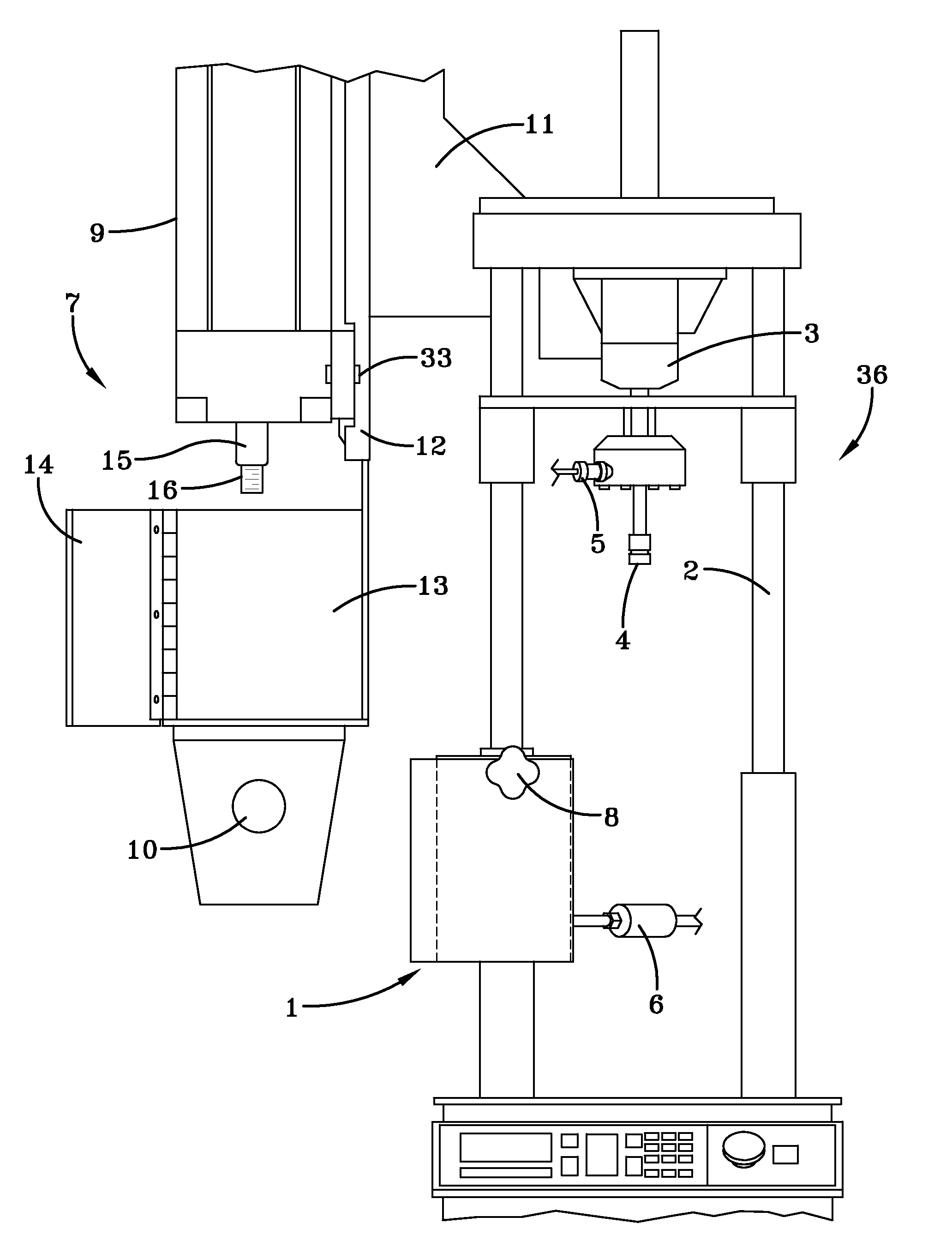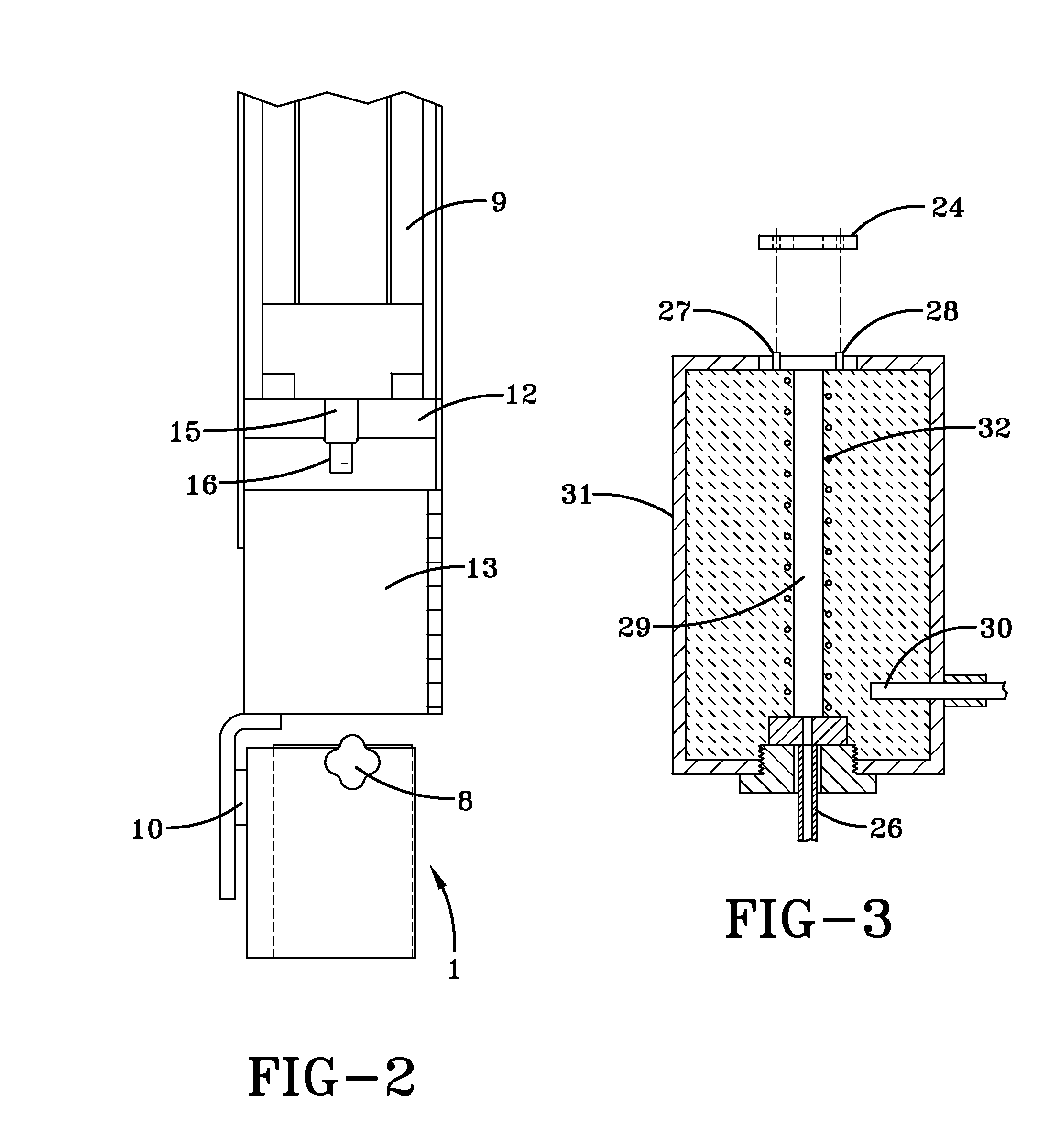Capillary rheometer with instrumented cleaning and packing device
a capillary rheometer and cleaning technology, applied in the field of capillary rheometers, can solve the problems of time-consuming cleaning method, emission of volatile organic solvents into the atmosphere, and extremely time-consuming cleaning method of capillary rheometer, and achieve the effect of quick and effective cleaning
- Summary
- Abstract
- Description
- Claims
- Application Information
AI Technical Summary
Benefits of technology
Problems solved by technology
Method used
Image
Examples
example 2
[0049]In this experiment a capillary rheometer that was equipped with the cleaning and packing attachment of this invention was used to determine the melt viscosity of a thermoplastic resin. In the procedure used the capillary rheometer was cleaned by first unscrewing the capillary die from the bottom of the rheometer housing with a wrench. A stiff rod was pushed through the capillary of the die after it was removed from the rheometer housing to force any residual polymer from the prior test run out of the die capillary.
[0050]The rheometer housing was then unlocked from being in the test position under the pressure / load sensor as illustrated in FIG. 12, and was swung into the cleaning / packing position under the linear motion device of the cleaning / packing attachment as depicted in FIG. 11. The rheometer housing was held in the cleaning / packing position by the magnet on the cleaning and packing attachment (the cleaning / packing securing means 10 shown in FIG. 1).
[0051]A cleaning / packi...
example 3
[0054]In this experiment the prior art method of cleaning and packing a rheometer (as described in Example 1) was compared to the method of cleaning and packing a rheometer which utilizes the method and equipment of this invention (as described in Example 2). In the procedures used the melt viscosity of identical Fortron® polyphenylene sulfide (PPS) samples was determined using both methods. More specifically, three operators (technicians) made viscosity determinations on 5 lots of the PPS samples with the procedure being repeated in a second trial. The results of this comparison are reported in Table 1.
TABLE 1StandardStudy% Study%Procedure of ExampleDeviationVariationVariationTolerance1 (Prior Art Method)1.356226.984534.3258.22 (Method of Invention)1.048255.398528.844.99
[0055]As can be seen by reviewing the data reported in Table 1, more consistent results were attained by using the equipment and procedure of this invention than was attained using the prior art equipment and method...
PUM
| Property | Measurement | Unit |
|---|---|---|
| diameter | aaaaa | aaaaa |
| magnetic forces | aaaaa | aaaaa |
| velocity | aaaaa | aaaaa |
Abstract
Description
Claims
Application Information
 Login to View More
Login to View More - R&D
- Intellectual Property
- Life Sciences
- Materials
- Tech Scout
- Unparalleled Data Quality
- Higher Quality Content
- 60% Fewer Hallucinations
Browse by: Latest US Patents, China's latest patents, Technical Efficacy Thesaurus, Application Domain, Technology Topic, Popular Technical Reports.
© 2025 PatSnap. All rights reserved.Legal|Privacy policy|Modern Slavery Act Transparency Statement|Sitemap|About US| Contact US: help@patsnap.com



